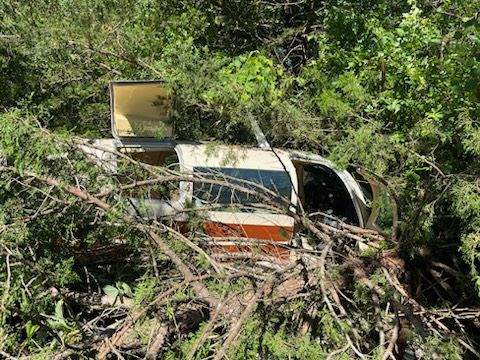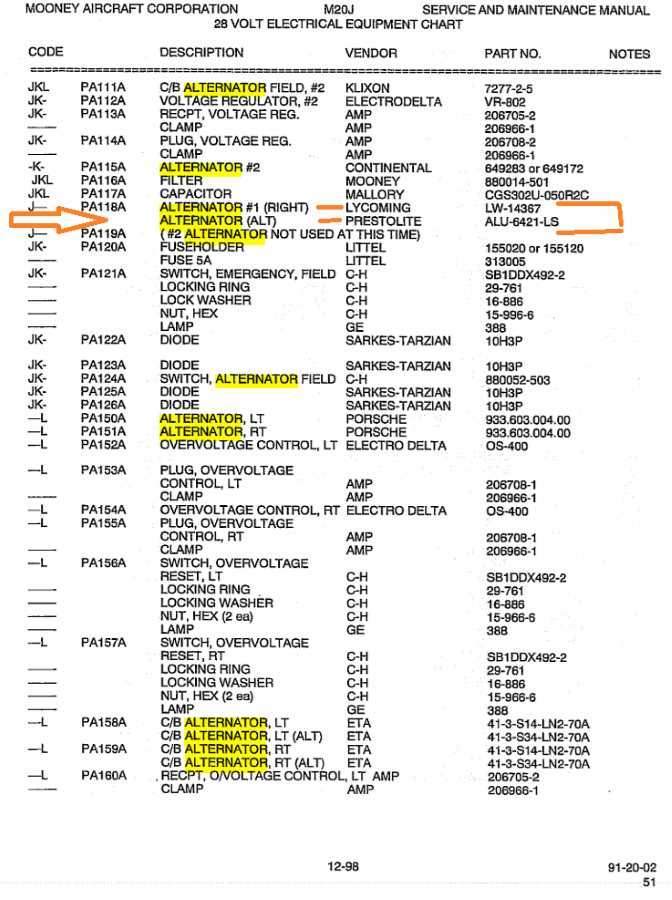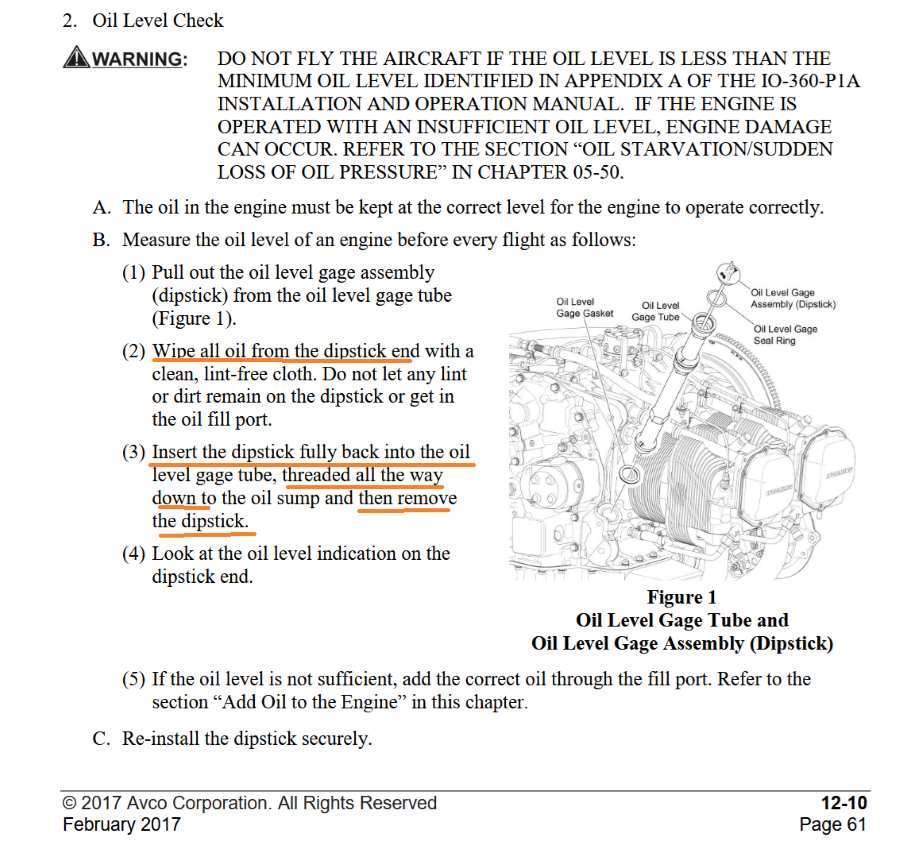
1980Mooney
Verified Member-
Posts
3,477 -
Joined
-
Last visited
-
Days Won
7
Content Type
Profiles
Forums
Blogs
Gallery
Downloads
Events
Store
Everything posted by 1980Mooney
-
Not at all. Not sure why you think I would. These suggestions are laughable. I just looked at this post again. I see there are 2 FBO's at KSRQ - Both Atlantic. Atlantic is owned by KRR since 2021. https://flysrq.com/fbos I seriously doubt that the lawyers and insurance company for Atlantic (KKR) and the airport are going to let the OP start altering their concrete parking aprons in any way. And don't think Atlantic is going to let anyone stack concrete blocks up on their ramp for a year. Parking a plane long term for maybe more than a year with only wheel chocks sounds like a formula for disaster. As mentioned, all it takes is a thunderstorm with associated quick gust of winds. And @joepilotmooney should be worried most about the risk of damage that his plane does to others.
-
Sounds like a good way to get immediately evicted plus pay damages. It’s not his concrete apron to tear up.
-
And what is the current “price range” that is just “about the same” amongst all the shops?
-
Not everyone is happy with the 3 specialty shops located in Florida, Minnesota and outside Houston. Sometimes owners fly halfway across the country, wait months, get it back and it leaks. Read the pireps
-
Tanks can be patched but few A&P’s have the skill (or patience) to do it right. Old leaking seal has to be removed in preparation. Done wrong, the mechanic will disturb (lift) good seal and worsen the problem. The actual source of leak is usually hard to find since it may run along the inside of the wing before you notice it. You have to fill the tank with soapy water and either blow air on the outside of the wing or pull a vacuum to observe and pinpoint the source of the leak Fortunately I have a mechanic who knows how to do it right.
-
Yikes. One of the Achilles heels of a Mooney. You are going to get a lot of opinions. The 3 specialty shops in the country charge about $12,000-14,000. A good seal should last 30 years.
-
In VMC conditions, N123WJ, a 1987 J with four (4) on board, landed 15 minutes after sunset on the 3,634 ft runway at Ava, MO (KAVO). He landed on R31 but closest weather showed winds 190 at 7 knots. He subsequently went off the end of the 3,634 ft. runway and impacted fence and bushes. The plane was destroyed with left wing separated at the wing root, The cowling and engine crushed and tail bent/twisted. Injuries were minor. Pilot claimed he could not reduce RPM below 1,550 but NTSB found no problem. They did find the brakes leaking and pads below minimum. The plane was registered to the owner/pilot in February 2024. Accident Mooney M20J N123WJ, Thursday 13 June 2024 https://data.ntsb.gov/carol-repgen/api/Aviation/ReportMain/GenerateNewestReport/194521/pdf https://data.ntsb.gov/Docket?ProjectID=194521 N123WJ (MOONEY M20J owned by ESKOLA JACOB) Aircraft Registration - FlightAware
-
If you listened to the passenger's interview with Channel 11 on the prior page, he said they had to jump start the plane before taking off from Pearland. However, they had just landed at Pearland about 45 minutes earlier. Either the pilot left the all electronics on while at Pearland, or his alternator had failed earlier and he was running on the battery when he landed at Pearland. Not sure who was flying but the owner of the plane is 69 years old per internet. Also FAA Airman shows no medical information. AviationDB shows that his medical expired in 2017. Incident Grumman American AA-5 Traveler N5450L, Wednesday 11 December 2024 Incident Cessna 182T Skylane N127SL, Wednesday 11 December 2024
-
It sounds like you retained the alternator that originally came with you IO-360 when you converted to the IO-390. Sometime back in the late 80's or early 90's, the Prestolite aviation business was first sold to Electrosystems, Inc in Ft Deposit, AL. Then Kelly Aero acquired Electrosystems. In 2010, Hartzell acquired the part of Kelly that made alternators and starters (they acquired the rest of Kelly Aero in 2023). So Prestolite Alternators are still made - just the name has changed to be part of the evil Hartzell empire of Arcline Investment. Mooney originally used the Prestolite ALU-6421-LS on your J because it was a cheaper alternative to the Lycoming made alternator LW-14357. The Hartzell ALU-8521LS superseded the ALU-6421-LS. Kelly Prestolite update bulletin Microsoft Word - Service Bullet ALU-8521Ls Hartzell New Alternator | Aircraft Spruce
-
“There have been more than few "new and improved" things that were forced onto the public that would not survive on the open market if it were not for government mandates or subsidies.” Hmmmm…. Let’s think of one! AVIATION - Its adoption and growth over the past 100 years The federal government has been subsidizing aviation since the first air mail contracts in 1918. They built most of the runways in this country during World War II. Few general aviation airports are able to support themselves financially alone and operating losses are generally subsidized by city budgets. Capital spinning is subsidized by federal grants ( which, if not directly to an airport are dolled out to state aviation agencies, which in turn subsidize local airports) The successful private airports are usually the first ones to succumb to sale to developers for new housing (I’ve seen three airports disappear in West Houston to become housing during the past 25 years). General Aviation isn’t paying its way for ATC either – it’s subsidized by commercial operators. So maybe now bureaucrats will start giving a s^%$ about how much they are subsidizing us and maybe we will actually be required to start paying our way. Let’s see how long we survive.
-
Even the passenger is stupid. His kneejerk action was to post the video nearly immediately and thank the “skilled pilot for getting them down” in the video description. The passenger actually thinks the pilot saved his life rather than being the one that nearly killed him. The responses posted on the passenger’s YouTube have been scathingly critical of the pilot. Yet surprisingly the passenger leaves this embarrassingly incriminating video up. Well at least it will make the FAA & NTSB’s jobs a lot easier….
-
Feasible and practical to fit vernier throttle to an M20J?
1980Mooney replied to jtager's topic in Modern Mooney Discussion
You may be waiting a long time for a response. “jtager” last logged onto MooneySpace in mid 2021. May have given up on modifying his plane and sold it while prices were skyrocketing. You can click on anyone’s profile and see their activity unless they completely block it. -
It’s pretty simple. You won’t find a TKS Ovation or a Bravo in your price range constraint.
-
Dynon Autopilot for M20J/K approved!
1980Mooney replied to dominikos's topic in Modern Mooney Discussion
Does that include a new autopilot? I don’t think the OP has one. -
Just me or has anybody else modified fuel cans?
1980Mooney replied to Echo's topic in Vintage Mooneys (pre-J models)
Containers of AVGAS at destination? It's usually in the tank at the pump.... Going to an airfield without fuel? Wouldn't most plan a fuel stop at a nearby field with fuel even if it required an additional intermediate stop? But rather than tanker it on your flight or make an intermediate fuel stop, this is a solution to "tanker" it by car/truck in a separate trip and store it for days/weeks/months in advance of each departure? I guess I don't understand the problem. -
upgrading - older/newer, slower/faster, value of avionics?
1980Mooney replied to AJ88V's topic in General Mooney Talk
This was discussed in a recent topic. Modern glass panel, WAAS GPS, coupled glide slope autopilot - cheapest install is Dynon at $77,000. Be sure to increase your insurance hull value. Slippery slope.... -
Unusual gear up at KGZL OK - M20K
1980Mooney replied to Mooney in Oz's topic in Mooney Safety & Accident Discussion
This picture of N1167Y was taken on December 8 and posted on the Facebook Mooney Forum. Generally after a Mooney has a clean gear-up landing, they lift the plane and extend the gear. This sad K likely has damage to the landing gear and mechanism if they are just leaving it sitting on its belly. -
checking Lycoming oil level? (plus a neat trick for adding oil)
1980Mooney replied to AJ88V's topic in General Mooney Talk
Actually it is in the Lycoming docs. All current Lycoming Service, Maintenance and Operating manuals for Lycoming 360 and 390 Series engines say the same thing: "Refer to the section “Oil Level Check” in Chapter 12-10." -
It is not just about "making it right". It is about explaining why the engine didn't come back with the same parts - parts that had no reason to be replaced. If this was a $200 oil change and it came back with a different dipstick you would say WTF is going on. This is likely a $30,000+ service - clear explanation amd documentation of unexpected (and potentially unwarranted) changes are in order.
-
If you are suggesting that the shop found that he had an incorrect dipstick and that they had to replace it with the proper one in order for the engine/plane to be airworthy, then They should have invoiced him for a new replacement part They should have logged the change in the Engine Log And they should have informed him that he had been using the incorrect dipstick and level for years.
-
I wonder what else this 'reputable shop' accidentally swapped with some other guy's engine..... Since you said "overhaul" I assume that this was not an engine "swap" and that you were not invoiced for a new or any kind of replacement dipstick. In that case, if I were you, my first call would be to the 'reputable shop' for an immediate explanation. Can they explain what happened? Were they aware of a screw up (lost, damaged) and tried to correct it without telling you? Did they lose yours and procure (find) a wrong replacement? Are they unable to explain and are completely clueless? Are they a shop that uses uncertified mechanics (i.e. automotive mechanics) under "supervision of an A&P") - more common now days to cut cost. Did they recently fire a mechanic? (i.e. the one that worked on your plane) What else did their mechanics screw up that you can't see? If they can't explain anything and everything to your satisfaction, then I personally would not have a good feeling flying behind this engine. I would also publicize the name of the shop so others can steer clear.
-
Have you inspected inside the pipe for internal corrosion? Just curious - are you running LOP or ROP?
-
Unusual gear up at KGZL OK - M20K
1980Mooney replied to Mooney in Oz's topic in Mooney Safety & Accident Discussion
You have it backwards and are arguing against your own logic. "and lower payouts after a good salvage sale." "Payouts" are to the Owner and are a function of Insured Hull Value.. Perhaps you mean "cost to insurer" - However the "good salvage value" is because the price of salvaged aircraft parts has been steadily increasing (not going down) which means higher cost for repairs and higher cost to Owners that don't have insurance coverage and higher cost to Insurance companies that are paying for repairs and as a result are passing it on to Owners by charging higher Insurance Premiums. There are no lower insurance premiums. And "salvage market" is a shrinking and consolidating market due to the shrinking fleet. BAS has purchased its oldest competitor, White Industries and all the used parts inventory of Mooney specialist LASAR. That means fewer options for us and less competition. And less competition means higher prices. Basic capitalist economics.







